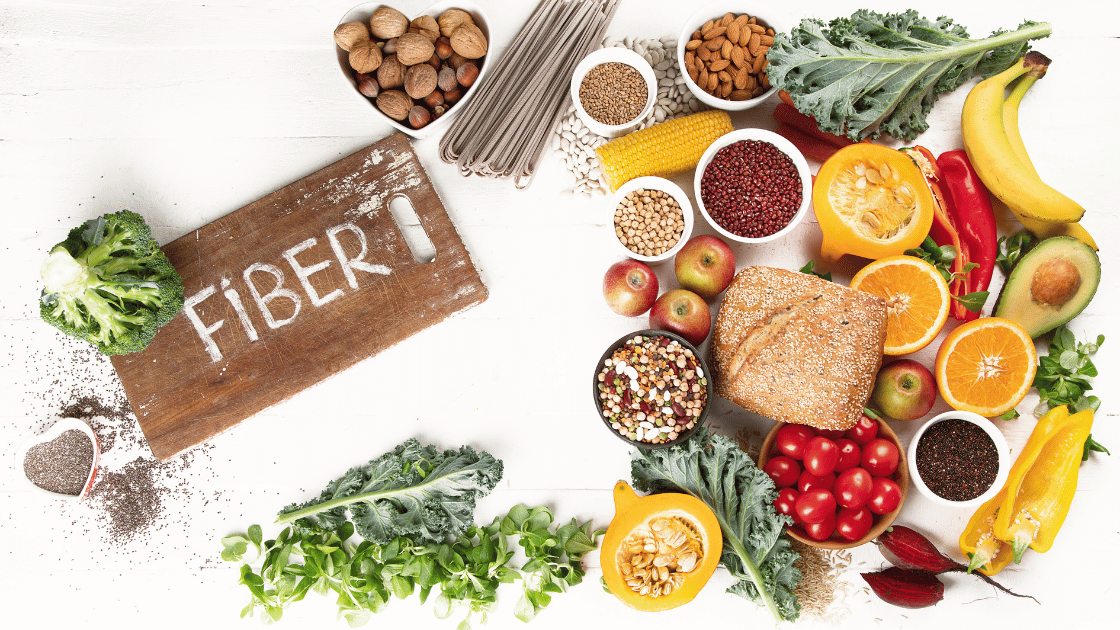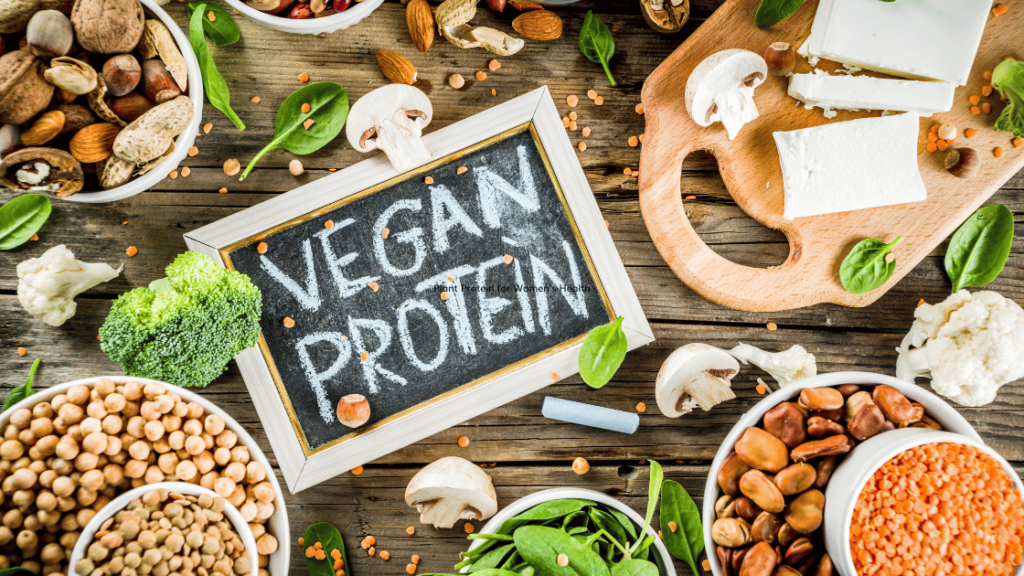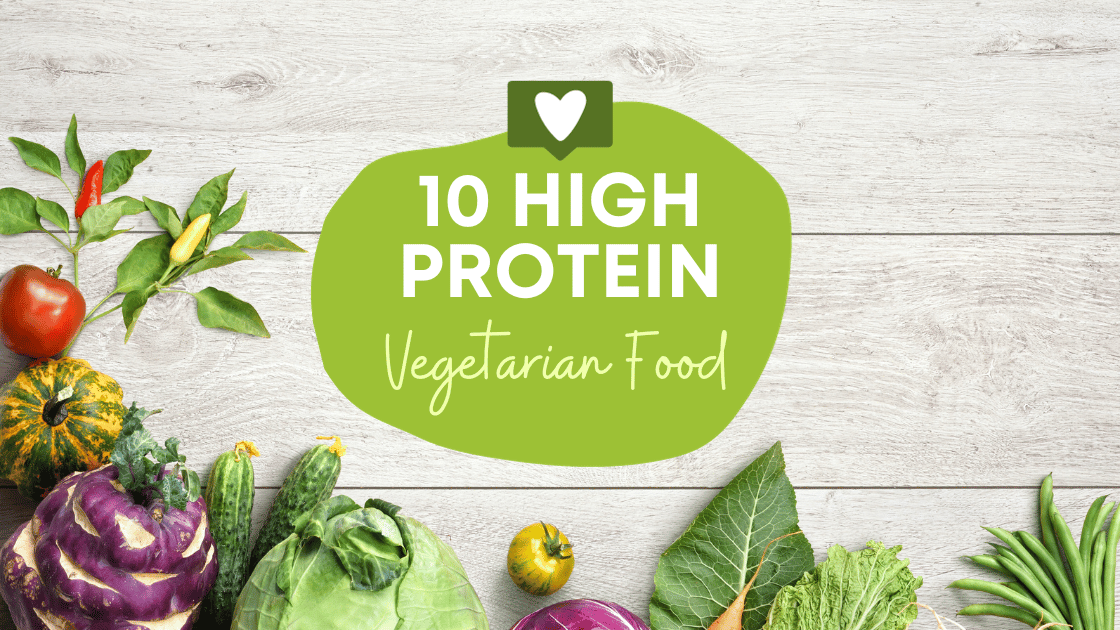High-Fiber Foods: Types, Health Benefits, and Supplements

High-fiber foods are important for a healthy diet. They have essential nutrients and offer many health benefits. Here’s what you need to know:
Types of Fiber
There are two main types of fiber:
- Soluble fiber can be found in foods like oats, peas, beans, apples, citrus fruits, carrots, and barley.
- Insoluble fiber is commonly present in whole-wheat flour, wheat bran, nuts, beans, and vegetables such as cauliflower, green beans, and potatoes.
Health Benefits
Eating a lot of fiber has several advantages:
- It helps with digestion.
- It can help you manage your weight by making you feel full.
- It’s good for your heart because it can lower cholesterol levels.
Fiber Supplements
Sometimes people can’t get enough fiber from food alone. In those cases, they might consider taking fiber supplements. These supplements can be an easy way to get the fiber you need. By knowing how important high-fiber foods are and the good things they can do for your body, you can make smart choices about what you eat.
The Crucial Role of Fiber in Digestive Health
Fiber plays a crucial role in maintaining optimal digestive health. It provides numerous benefits that contribute to the overall well-being of our digestive system. Let’s explore the key ways in which fiber supports digestive health:
1. Preventing Constipation
One of the primary benefits of fiber is its ability to add bulk to the stool, promoting regularity and preventing constipation. Insoluble fiber, found in foods like whole grains and vegetables, passes through the digestive tract largely intact, adding volume to the stool and helping it move smoothly through the intestines. This helps to prevent the discomfort and straining associated with constipation.
2. Maintaining Optimal Bowel Function
In addition to preventing constipation, fiber also helps to maintain optimal bowel function. It promotes regular bowel movements by stimulating the muscles in the intestines, assisting in the smooth passage of waste material. By keeping our digestive system functioning properly, fiber helps to promote overall digestive health.
3. Supporting Beneficial Gut Bacteria
Fiber acts as a prebiotic, providing nourishment for beneficial gut bacteria. These bacteria play a crucial role in maintaining a healthy microbiome, which is essential for proper digestion and overall health. When we consume fiber-rich foods, such as fruits, vegetables, and legumes, the beneficial bacteria in our gut ferment these fibers and produce short-chain fatty acids. These fatty acids provide energy for the cells lining our intestines and help reduce inflammation within our gut.
4. Reducing Risk of Digestive Disorders
Studies have shown that a high-fiber diet is associated with a reduced risk of developing common digestive disorders such as diverticulitis and hemorrhoids [ Source- https://depts.washington.edu ]. Diverticulitis occurs when small pouches form in the colon wall and become inflamed or infected. A diet rich in fiber can help prevent diverticula formation by promoting regular bowel movements and reducing pressure in the colon. Hemorrhoids, on the other hand, are swollen blood vessels in the rectal area that can be painful and uncomfortable.
A fiber-rich diet softens the stool, making it easier to pass and reducing the risk of straining during bowel movements, thus lowering the risk of hemorrhoids. Incorporating high-fiber foods into our daily diet can significantly contribute to maintaining a healthy digestive system. The benefits of fiber extend beyond just promoting regular bowel movements; they also support the growth of beneficial gut bacteria and reduce the risk of common digestive disorders. By prioritizing fiber-rich foods, we can enhance our overall digestive health and improve our well-being.

The Impact of Fiber on Weight Loss and Appetite Control
Fiber-rich foods are important for managing weight and controlling appetite. They offer many advantages for those who want to reach and stay at a healthy body weight. Here’s how fiber affects weight loss and appetite control:
1. Feelings of Fullness
- Fiber-rich foods like fruits, vegetables, whole grains, and legumes are known to make you feel full.
- When you eat these foods, the fiber in them adds bulk to your diet without adding extra calories. This helps you feel satisfied with smaller portions.
2. Portion Control
- High-fiber foods can help with portion control by making you feel full.
- This is especially useful for people who want to manage their calorie intake and choose healthier foods.
3. Long-Term Weight Loss Success
- Studies consistently show that a diet high in fiber is connected to long-term weight loss success.
- Research has found that people who eat diets rich in fiber are more likely to achieve their weight loss goals and maintain a healthy weight over time.
Incorporating fiber-rich foods into your meals can support your efforts to manage your weight by making you feel full and satisfied while naturally controlling how much you eat. And because it also helps with long-term weight loss, it’s clear that fiber is important for overall health and well-being.
Understanding Soluble and Insoluble Fiber
Dietary fiber refers to the indigestible part of plant-based foods that provides numerous health benefits. It plays a crucial role in maintaining a healthy digestive system and overall well-being. There are two main types of dietary fiber: soluble fiber and insoluble fiber, each with its own unique properties and functions within the body.
Soluble Fiber
Soluble fiber dissolves in water to form a gel-like substance in the digestive tract. It is fermented by gut bacteria in the colon, producing short-chain fatty acids (SCFAs) that provide various health benefits.
- Foods rich in soluble fiber include oats, barley, legumes, fruits (such as apples and oranges), vegetables (such as carrots and broccoli), and flaxseeds.
- Health benefits of soluble fiber include:
- Lowering cholesterol levels: Soluble fiber binds to cholesterol in the digestive tract, preventing its absorption and helping to reduce LDL (bad) cholesterol levels.
- Regulating blood sugar levels: Soluble fiber slows down the absorption of sugars, preventing rapid spikes in blood sugar levels.
- Promoting a healthy gut microbiome: Soluble fiber acts as a prebiotic, providing nourishment for beneficial gut bacteria and supporting a diverse microbial community.
Insoluble Fiber
Insoluble fiber does not dissolve in water and adds bulk to the stool. It helps promote regular bowel movements and prevents constipation.
- Foods rich in insoluble fiber include whole grains (such as wheat bran), nuts, seeds, vegetables (such as dark leafy greens), and the skin of fruits.
- Health benefits of insoluble fiber include:
- Promoting digestive health: Insoluble fiber adds bulk to the stool, helping it move through the digestive system more efficiently and preventing constipation.
- Preventing diverticular disease: Insoluble fiber reduces the risk of diverticula (small pouches) forming in the colon, which can lead to diverticulitis.
- Supporting weight management: Insoluble fiber provides a feeling of fullness, helping to control appetite and prevent overeating.
Both soluble and insoluble fiber are essential for maintaining a healthy diet and digestive system. While some foods contain predominantly one type of fiber, many foods contain both types in varying proportions. It is important to consume a variety of high-fiber foods to obtain the benefits of both soluble and insoluble fiber. By incorporating a wide range of fiber-rich foods into your diet, you can ensure that you are getting an adequate amount of both soluble and insoluble fiber. Remember to drink plenty of water when increasing your fiber intake, as it helps soften the stool and aids in digestion.
The Diverse Sources of Dietary Fiber
Dietary fiber is abundant in a wide range of plant-based foods, offering a variety of options to include in your daily meals and snacks. These foods provide both soluble and insoluble fibers, each with their unique health benefits.
Soluble Fiber Sources
Soluble fiber dissolves in water and forms a gel-like substance in the digestive tract. It plays a crucial role in regulating blood sugar levels and reducing cholesterol levels. Some common sources of soluble fiber include:
- Oats: Whether you enjoy a warm bowl of oatmeal for breakfast or use oats in baking, this whole grain is an excellent source of soluble fiber.
- Legumes: Foods like beans, lentils, chickpeas, and peas are not only rich in protein but also packed with soluble fiber.
- Fruits: Fruits such as apples, oranges, berries, and pears are high in soluble fiber. Aim to consume them with the skin whenever possible to maximize your fiber intake.
- Vegetables: Carrots, Brussels sprouts, broccoli, and sweet potatoes are among the vegetables that provide soluble fiber along with other essential nutrients.
Insoluble Fiber Sources
Unlike soluble fiber, insoluble fiber does not dissolve in water. It adds bulk to the stool and promotes regular bowel movements by preventing constipation. Here are some notable sources of insoluble fiber:
- Whole Grains: Including whole wheat bread, brown rice, quinoa, and whole grain pasta in your diet can significantly boost your insoluble fiber intake.
- Nuts and Seeds: Almonds, walnuts, chia seeds, flaxseeds, and sunflower seeds are not only rich in healthy fats but also provide a good amount of insoluble fiber.
- Leafy Greens: Vegetables like spinach, kale, and cabbage are not only packed with vitamins and minerals but also contain insoluble fiber that supports a healthy digestive system.
- Root Vegetables: Foods like carrots, beets, and radishes are excellent sources of insoluble fiber. They can be enjoyed raw in salads or cooked in various dishes.
Practical Tips for Incorporating Fiber-Rich Foods
Now that you’re aware of the diverse sources of dietary fiber, here are some practical tips to help you incorporate them into your daily meals and snacks:
- Start your day with a bowl of oatmeal topped with fresh berries and a sprinkle of chia seeds.
- Add beans or lentils to soups, stews, salads, or as a filling for tacos and burritos.
- Enjoy a variety of fruits as snacks throughout the day or add them to smoothies for an extra dose of fiber.
- Include a side of steamed vegetables with your meals or sauté them with olive oil and garlic for added flavor.
- Swap refined grains for whole grains in your recipes, such as using brown rice instead of white rice or whole wheat pasta instead of regular pasta.
- Snack on nuts and seeds by themselves or sprinkle them over yogurt, salads, or roasted vegetables.
Remember to gradually increase your fiber intake and drink plenty of water to support proper digestion. By incorporating these fiber-rich foods into your diet, you’ll reap the numerous health benefits they offer.
Meeting Your Fiber Needs Through Natural, Whole Foods
When it comes to meeting your daily fiber needs, incorporating a variety of high-fiber foods into your meals and snacks is key. Here’s a curated list of 10 nutritious and delicious high-fiber foods that can help you achieve your dietary goals:
- Raspberries: Packed with 8 grams of fiber per cup, raspberries are a sweet and tangy fruit that can easily be added to yogurt, oatmeal, or enjoyed on their own as a snack.
- Artichokes: A versatile vegetable, artichokes contain approximately 7 grams of fiber per medium-sized artichoke. They can be steamed, grilled, or marinated for a flavorful addition to your diet.
- Lentils: With about 15 grams of fiber per cooked cup, lentils are a fantastic plant-based protein source that can be used in soups, stews, salads, and grain bowls.
- Chia Seeds: These tiny seeds boast an impressive 10 grams of fiber per ounce and can be easily incorporated into smoothies, overnight oats, or used as a thickening agent for sauces and dressings.
- Quinoa: As a gluten-free whole grain, quinoa offers 5 grams of fiber per cooked cup and serves as a nutritious base for salads, pilafs, and breakfast bowls.
- Avocado: Not only are avocados rich in heart-healthy fats, but they also provide around 10 grams of fiber per fruit. Enjoy them sliced on toast or blended into creamy dips and dressings.
- Black Beans: Providing approximately 15 grams of fiber per cooked cup, black beans are a staple in many cuisines and can be added to tacos, burritos, soups, and casseroles.
- Pear: A medium-sized pear contains about 6 grams of fiber and makes for a convenient grab-and-go snack or a sweet addition to salads and cheese plates.
- Broccoli: This cruciferous vegetable offers 5 grams of fiber per cooked cup and can be enjoyed steamed, roasted, or added to stir-fries for a nutritious boost.
- Almonds: With 3.5 grams of fiber per ounce (about 23 almonds), these nuts make for a satisfying snack on their own or can be sprinkled over yogurt or salads for added crunch.
By incorporating these high-fiber foods into your daily meals and snacks, you can easily meet your dietary fiber needs while enjoying a diverse range of flavors and nutritional benefits.

Strategies for Increasing Fiber Intake in Your Daily Diet
Boosting your fiber intake doesn’t have to be a daunting task. With a few simple strategies, you can gradually increase your fiber consumption and enjoy the health benefits that come with it. Here are some practical suggestions to help you incorporate more fiber into your daily diet:
1. Try out fiber-rich recipes
Experiment with recipes that feature high-fiber ingredients. For example, you can add beans or lentils to soups, stews, and salads, or use whole grain flour when baking bread or muffins. Including fiber-rich foods in your meals can make it easier to reach your daily fiber goals.
2. Incorporate more plant-based meals
Plant-based meals are naturally rich in fiber. Consider having meatless Mondays or increasing the number of vegetarian meals in your weekly menu. You can swap meat for legumes like chickpeas or black beans in dishes such as tacos, stir-fries, or pasta sauces.
3. Choose whole grains
Opt for whole grain versions of bread, rice, pasta, and cereals. Whole grains contain more fiber compared to their refined counterparts since they retain the bran and germ of the grain, which are rich in fiber and nutrients.
4. Snack on fruits and vegetables
Keep a variety of fresh fruits and vegetables on hand for convenient snacking throughout the day. Apples, berries, carrots, and celery sticks are all excellent sources of dietary fiber.
5. Gradually increase fiber consumption
To avoid digestive discomfort such as bloating or gas, it’s important to increase your fiber intake gradually. Start by adding small amounts of high-fiber foods to your diet each day and slowly increase the portion sizes over time. Remember that it’s important to set realistic goals when increasing your fiber intake. Aim to meet the recommended daily intake gradually rather than trying to achieve it all at once. This will allow your body to adjust to the increase in fiber and minimize any potential digestive issues. By incorporating these strategies into your daily routine, you can easily boost your fiber intake and enjoy the many health benefits that come with it. Remember, a fiber-rich diet supports digestive health, promotes weight management, and reduces the risk of chronic diseases. So why not start incorporating more fiber-rich foods into your meals today?
Examining the Need for Fiber Supplements
Do You Need Them?
Fiber supplements can play a crucial role in specific situations, such as when individuals are dealing with chronic constipation or when they need to meet increased fiber requirements during travel. Chronic constipation may require additional fiber intake to alleviate symptoms and promote regular bowel movements. Additionally, when traveling, access to high-fiber foods may be limited, making fiber supplements a convenient option to support digestive health.
Pros of Fiber Supplements
- Convenience: They offer a quick and straightforward way to increase fiber intake without having to make significant changes to one’s diet.
- Specific needs: In some cases, individuals may have dietary restrictions or health conditions that make it challenging to consume sufficient fiber from whole foods alone. Fiber supplements can help bridge this nutritional gap.

Cons of Relying Solely on Supplements
- Nutrient density: Whole food sources of fiber often come with additional essential nutrients, such as vitamins, minerals, and antioxidants, which may not be present in fiber supplements.
- Digestive benefits: High-fiber foods contribute to overall digestive health by providing bulk and promoting regular bowel movements. Relying solely on supplements may not offer the same comprehensive benefits for gut health.
By carefully considering individual circumstances and consulting with a healthcare professional, you can determine whether incorporating fiber supplements is appropriate for your specific needs.
Choosing the Right Fiber Supplement for Your Body
When it comes to choosing a fiber supplement that suits your body’s needs, it’s essential to understand the different types available and how they function in the body. Here are some key considerations and recommendations to help you make an informed decision:
Types of Fiber Supplements
- Psyllium Husk: Derived from the seeds of the Plantago ovata plant, psyllium husk is a popular soluble fiber supplement known for its ability to bulk up stool and support digestive regularity.
- Methylcellulose: This type of fiber supplement is derived from cellulose and is non-fermentable, making it effective in promoting bowel regularity and alleviating constipation.
Selecting a High-Quality Supplement
- Look for supplements from reputable brands that undergo third-party testing for purity and quality.
- Read product labels carefully to ensure that the supplement contains pure fiber without added sugars or artificial ingredients.
- Consider consulting a healthcare professional or a registered dietitian to get personalized recommendations based on your specific health needs.
Determining Appropriate Dosage
- Start with the lowest recommended dosage and gradually increase as needed to minimize the risk of gastrointestinal discomfort.
- Pay attention to individual tolerance levels and adjust the dosage accordingly to achieve optimal results without side effects.
Choosing the right fiber supplement involves thoughtful consideration of your unique dietary requirements and health goals. By understanding the different options available and seeking professional guidance if necessary, you can make an informed choice that supports your overall well-being.
Lifestyle Habits to Support Optimal Fiber Utilization
When it comes to getting the most out of a diet high in fiber, there are certain things you can do in your everyday life that will help your body make the most of this important nutrient. Here are two lifestyle factors to keep in mind:
1. Hydration: Drink Up!
One of the simplest ways to support your body’s use of fiber is to make sure you’re staying hydrated. Water is key for keeping fiber moving smoothly through your digestive system, which can help prevent any potential discomfort or digestive issues. And when you’re well-hydrated, fiber can do its job of adding bulk to your stool and keeping things regular. Here are some tips for staying hydrated:
- Aim for at least 8 glasses (64 ounces) of water each day.
- Carry a water bottle with you throughout the day as a reminder to drink up.
- Include hydrating foods in your diet, like fruits and veggies with high water content such as cucumbers, watermelon, and oranges.
2. Exercise: Get Moving!
Regular physical activity is not only good for your overall health, but it can also help support healthy digestion and enhance the benefits of a high-fiber diet. When you exercise, it stimulates the muscles in your digestive tract, which can promote regularity and prevent constipation. Here are some exercise tips to support your digestion:
- Aim for at least 150 minutes of moderate-intensity exercise each week. This could include activities like walking, jogging, swimming, or cycling.
- Incorporate strength training exercises that target your core muscles, as these can further support healthy digestion.
- Find activities that you enjoy and that keep you moving throughout the day, such as dancing, gardening, or playing a sport.
By making hydration and exercise a priority alongside your high-fiber diet, you can help your body make the most of this important nutrient. And as always, it’s a good idea to consult with your healthcare professional before making any major changes to your diet or exercise routine.
Putting It All Together: A Fiber-Focused Approach to Lifelong Wellness
Reinforcing the key takeaways from this article, it’s essential to understand the crucial role of both soluble and insoluble fibers in supporting overall health and well-being. By incorporating high-fiber foods into your diet, you can reap numerous health benefits and improve your overall wellness.
Here are the main points to remember:
- Prioritize whole food sources: When it comes to increasing your fiber intake, focus on incorporating natural, whole foods into your meals and snacks. These include fruits, vegetables, whole grains, legumes, and nuts/seeds. By consuming these fiber-rich foods, you’ll not only get the necessary fiber but also benefit from additional nutrients and antioxidants.
- Supplements as a complement: While whole foods should be your primary source of fiber, supplements can be a convenient option when you’re unable to meet your daily fiber needs through diet alone. However, it’s important to note that supplements should never replace a varied and balanced diet. They should be used as a complement and under the guidance of a healthcare professional.
- Consult with a healthcare professional: Before making any significant changes to your diet or starting a new supplement regimen, it’s always best to consult with a healthcare professional. They can provide personalized advice based on your specific health needs and ensure that you’re making choices that are safe and appropriate for you.
Adopting a fiber-focused approach to lifelong wellness is an excellent way to support your overall health and well-being. By understanding the different types of fiber, incorporating high-fiber foods into your diet, and using supplements wisely, you can optimize your fiber intake and enjoy the numerous health benefits that come with it. Remember:
The information provided in this article is for educational purposes only and should not be considered as medical advice. Consult with a healthcare professional before making any significant changes to your diet or starting a new supplement regimen.








